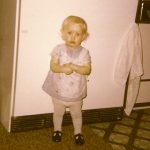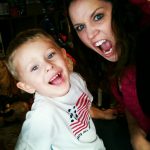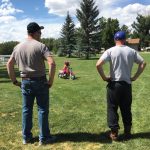
 For years we have been told that you can find out a lot about a person by their non-verbal communication…body language. Basically it is their physical behavior in any situation, as opposed to what they say about it. Things like facial expressions, body posture, gestures, eye movement, touch, and the use of space are key ways to tell if someone is lying, angry, or excited. Body language exists in both animals and humans, and anyone who has come up on a mother bear or a moose, can tell you. Believe me, I hope that none of my readers have found themselves in that situation.
For years we have been told that you can find out a lot about a person by their non-verbal communication…body language. Basically it is their physical behavior in any situation, as opposed to what they say about it. Things like facial expressions, body posture, gestures, eye movement, touch, and the use of space are key ways to tell if someone is lying, angry, or excited. Body language exists in both animals and humans, and anyone who has come up on a mother bear or a moose, can tell you. Believe me, I hope that none of my readers have found themselves in that situation.
I have always been told things like…when you are being interviewed, don’t cross your arms, because it makes you seem closed off, as well as, that it is a nervous habit to play with your hair, but I happen to know that things aren’t always so cut and dried. Anyone who knows me knows that if my arms are crossed over my body…I’m cold. And if I am playing with my hair, it isn’t because I’m nervous, but rather it is just something I like the feel of. Basically, I think that while body language is an effective tool. it isn’t the only way, and sometimes not even the best way to read a person. Body language isn’t a spoken language, and so must be interpreted broadly, instead of having an absolute meaning corresponding with a certain movement, which explains why my movements can be misleading.
Body language is even more difficult, in that, interpretations can vary from country to country, or culture to  culture. Some experts aren’t even sure that body language is universal. Body language is a subset of nonverbal communication, and really complements verbal communication in social interaction. Just think of how often you find people who can’t tell a story without using their hands…and their hands aren’t even saying anything specific. They are simply a gesture designed to clarify the story. Some researchers would say that nonverbal communication accounts for the majority of information transmitted during interpersonal interactions. It helps to establish the relationship between two people and regulates interaction, but beware, because it can be ambiguous, as seen in my own crossed arms not indicating being closed off, but rather cold. Facial expression is extremely important when expressing emotions through the body. If the body is saying one thing, and the face is saying another, maybe the person has something to hide, or the story they are telling is a lie. Combinations of eyes, eyebrow, lips, nose, and cheek movements help form different moods of an individual.
culture. Some experts aren’t even sure that body language is universal. Body language is a subset of nonverbal communication, and really complements verbal communication in social interaction. Just think of how often you find people who can’t tell a story without using their hands…and their hands aren’t even saying anything specific. They are simply a gesture designed to clarify the story. Some researchers would say that nonverbal communication accounts for the majority of information transmitted during interpersonal interactions. It helps to establish the relationship between two people and regulates interaction, but beware, because it can be ambiguous, as seen in my own crossed arms not indicating being closed off, but rather cold. Facial expression is extremely important when expressing emotions through the body. If the body is saying one thing, and the face is saying another, maybe the person has something to hide, or the story they are telling is a lie. Combinations of eyes, eyebrow, lips, nose, and cheek movements help form different moods of an individual.
Some studies show that to really interpret emotions, both facial expression and bodily language must be taken into account. Behavioral experiments have also shown that “recognition of facial expression is influenced by perceived bodily expression. This means that the brain processes the other’s facial and bodily expressions simultaneously.” Participants in these studies were accurately able to judge emotions based on facial expression. This is because the face and the body are normally seen together in their natural proportions and the emotional signals from the face and body are well integrated. Things like a lack of crinkles around the eyes would suggest a fake smile. At one point, researchers believed that making a genuine smile was nearly impossible to do on command. I hadn’t thought about that, but it makes sense. When you’re smiling joyfully, 
 they crinkle. When you’re faking it, they don’t. If someone’s trying to look happy but isn’t, you won’t see wrinkles.
they crinkle. When you’re faking it, they don’t. If someone’s trying to look happy but isn’t, you won’t see wrinkles.
I find it quite interesting to study the different interpretations that have been place in body language, and I think that many of them are probably pretty close to accurate, but it’s always a good idea to keep an open mind when it comes to body language. When we are too quick to make a judgment, we can find ourselves realizing that we were completely in the wrong in our interpretation of non-verbal communication.


Leave a Reply